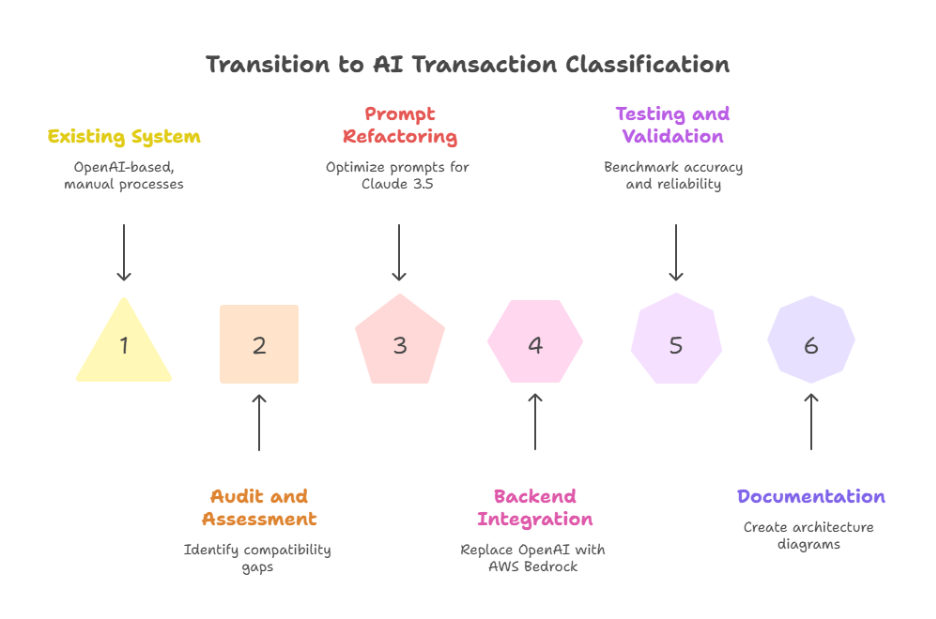GetAsset provides comprehensive personal finance management solutions through AI-powered tools. Their platform automatically categorizes transactions, tracks spending patterns, and delivers personalized insights for users.
But GetAsset’s existing OpenAI-based AI transaction classification system began facing limitations. Rising costs, limited customization, and long-term vendor lock-in risks made it difficult to scale cost-effectively while maintaining accuracy.
The problem: cost, accuracy, and vendor lock-in challenges
GetAsset’s existing AI transaction classification system, built on OpenAI, was increasingly difficult to sustain as the company scaled. Rising API usage drove up costs, while limited customization options restricted the ability to fine-tune prompts and improve classification accuracy.
At the same time, the heavy reliance on a single vendor created long-term lock-in risks, threatening both flexibility and scalability. Together, these challenges made it harder for GetAsset to deliver the accuracy and efficiency their customers expected while keeping the platform cost-effective and future-ready.
The solution: AI transaction classification with Claude 3.5 on Bedrock
GoML built a fully automated, cloud-native pipeline on AWS Bedrock using Claude 3.5 Sonnet to deliver accurate, scalable, and cost-efficient transaction classification, a cornerstone of modern personal finance management.
Audit and compatibility assessment
- Reviewed existing OpenAI-based workflows, input/output formats, and dependencies.
- Identified compatibility gaps to ensure smooth transition to Bedrock services.
Prompt and payload refactoring
- Refactored OpenAI prompts to leverage Anthropic Claude 3.5 Sonnet.
- Normalized payload structures and parsing logic for consistency and flexibility.
Backend integration
- Replaced OpenAI API calls with AWS Bedrock endpoints.
- Integrated Claude 3.5 for parsing metadata and AI transaction classification.
Testing and validation
- Benchmarked Bedrock outputs against OpenAI for accuracy and errors.
- Conducted hallucination/error testing to validate reliability.
Documentation and deployment readiness
- Created detailed documentation with architecture diagrams and sample outputs.
- Outlined deployment steps for seamless scaling beyond the POC.

The impact: improved accuracy, lower costs, and future-ready scalability
- 20% increase in classification accuracy, improving reliability of financial insights for users
- 30% reduction in API costs, delivering immediate savings and long-term cost control
- Seamless scalability with AWS-native architecture, enabling growth without vendor lock-in
Lessons for other organizationsa
Common pitfalls to avoid
- Relying too heavily on a single AI vendor.
- Ignoring prompt and payload optimization.
- Treating classification as a static one-time fix.
Advice for teams facing similar challenges
- Benchmark across multiple models early.
- Track accuracy, cost, and latency metrics together.
- Use AWS-native services for flexibility and scale.
Want to boost classification accuracy and reduce costs?
Let GoML help you build Gen AI-powered AI transaction classification pipelines just like GetAsset.





